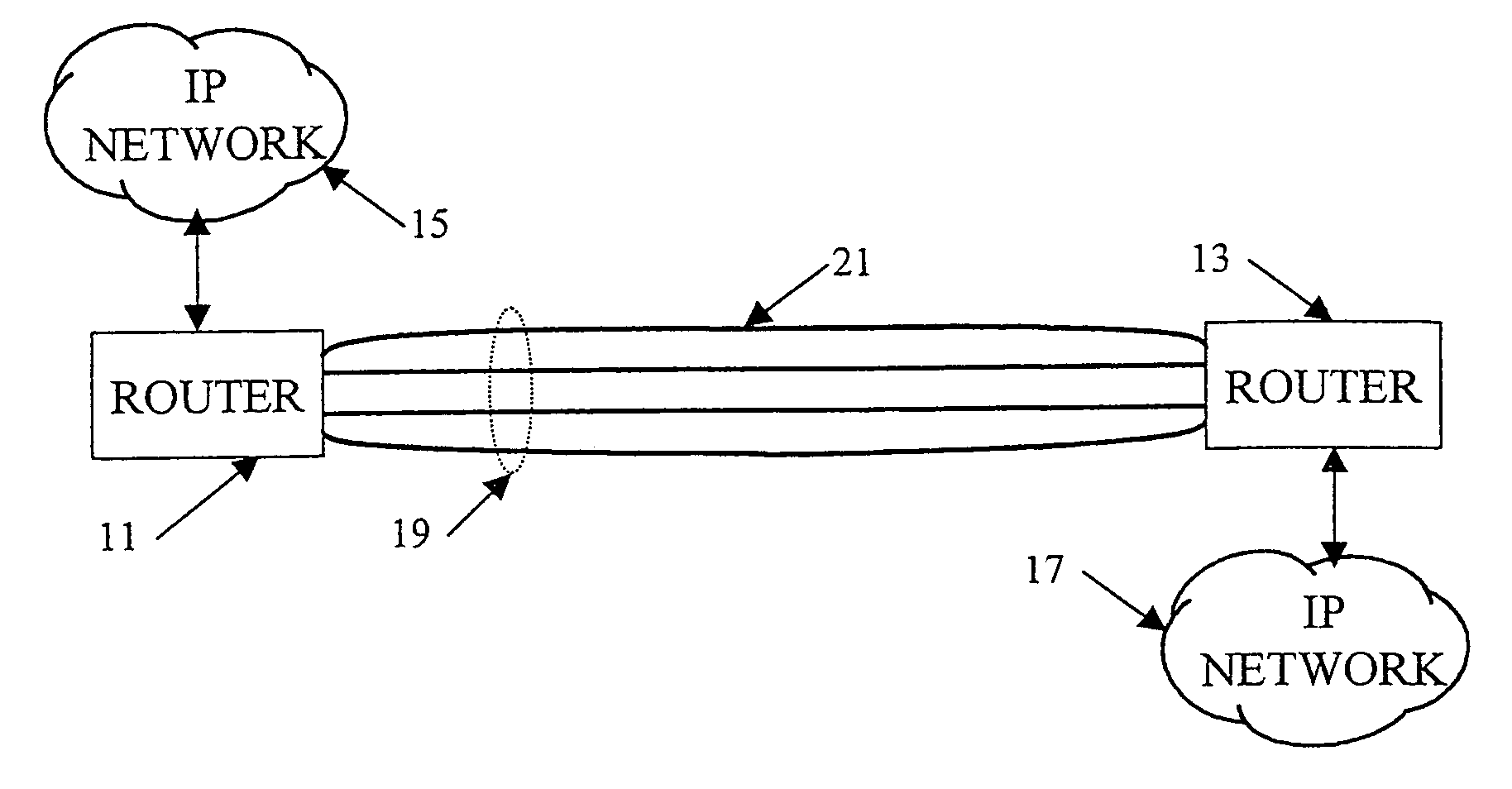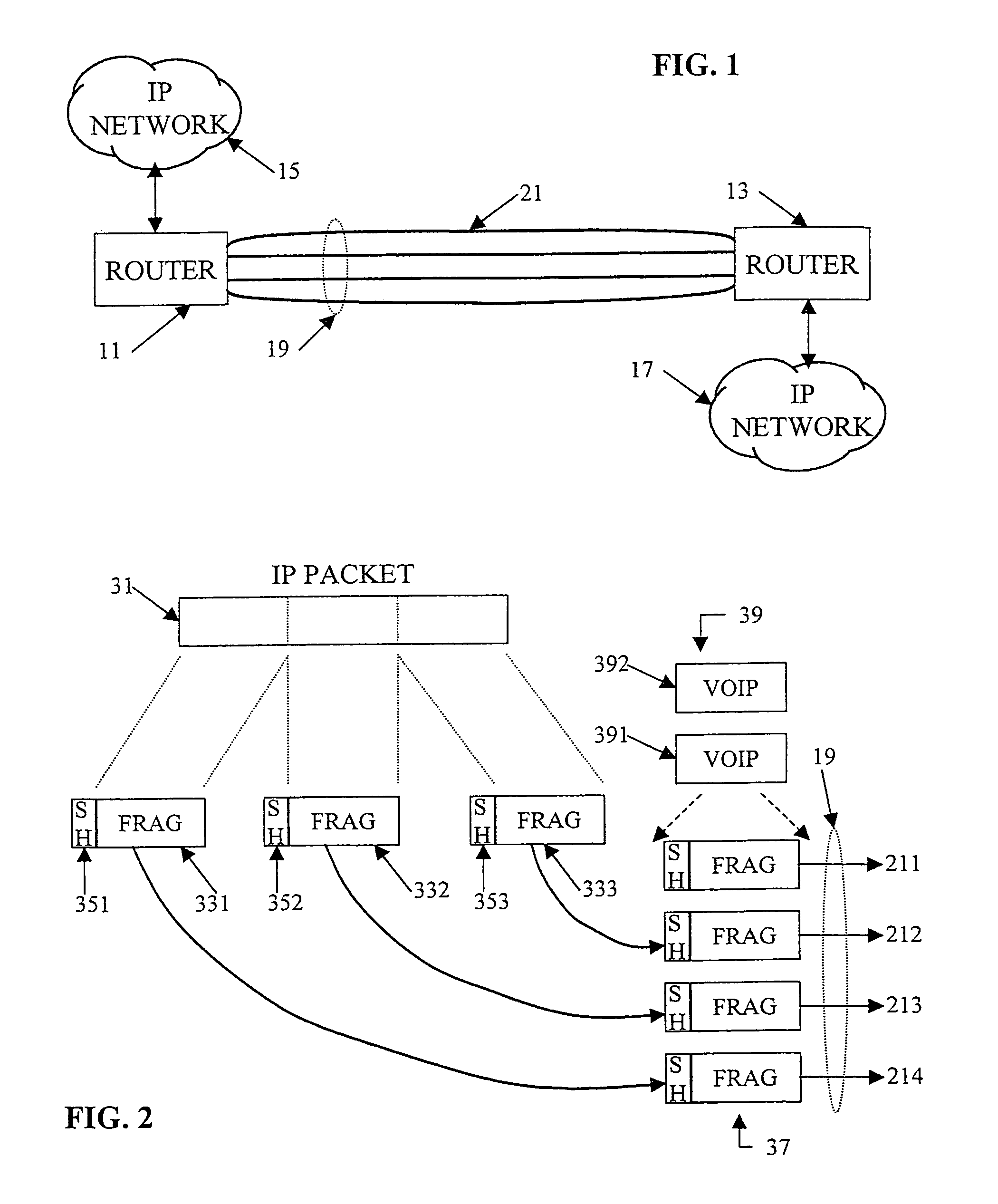Combining multilink and IP per-destination load balancing over a multilink bundle
a multilink bundle and load balancing technology, applied in data switching networks, high-level techniques, frequency-division multiplexes, etc., can solve the problems of inability to use all the bandwidth of all the links, high cost of approaches, and inability to balance packet load, so as to prevent differential delay and balance the load of such packets
- Summary
- Abstract
- Description
- Claims
- Application Information
AI Technical Summary
Benefits of technology
Problems solved by technology
Method used
Image
Examples
Embodiment Construction
[0034]The invention involves a combination of multilink processing for one class of traffic and per-flow load balancing for another class of traffic that is sensitive to delay. This particular combination allows a multilink bundle to efficiently carry different classes of traffic with an optimum load balance. The processing of the delay sensitive traffic, however, keeps packets for any one such flow going over one link in the bundle, and thereby avoids problems and / or delays due to ordering or reordering received packets and differential delays incurred by transit over more than one link.
[0035]It may be helpful at this point to consider a typical implementation of a multilink bundle. As shown in the example of FIG. 1, a first router 11 conducts peer-to-peer communications with a second router 13. Each router 11, 13 provides two-way IP packet communication services for one or more devices (not shown) that are coupled to the respective router through some form of IP network, shown gen...
PUM
 Login to View More
Login to View More Abstract
Description
Claims
Application Information
 Login to View More
Login to View More - R&D
- Intellectual Property
- Life Sciences
- Materials
- Tech Scout
- Unparalleled Data Quality
- Higher Quality Content
- 60% Fewer Hallucinations
Browse by: Latest US Patents, China's latest patents, Technical Efficacy Thesaurus, Application Domain, Technology Topic, Popular Technical Reports.
© 2025 PatSnap. All rights reserved.Legal|Privacy policy|Modern Slavery Act Transparency Statement|Sitemap|About US| Contact US: help@patsnap.com



